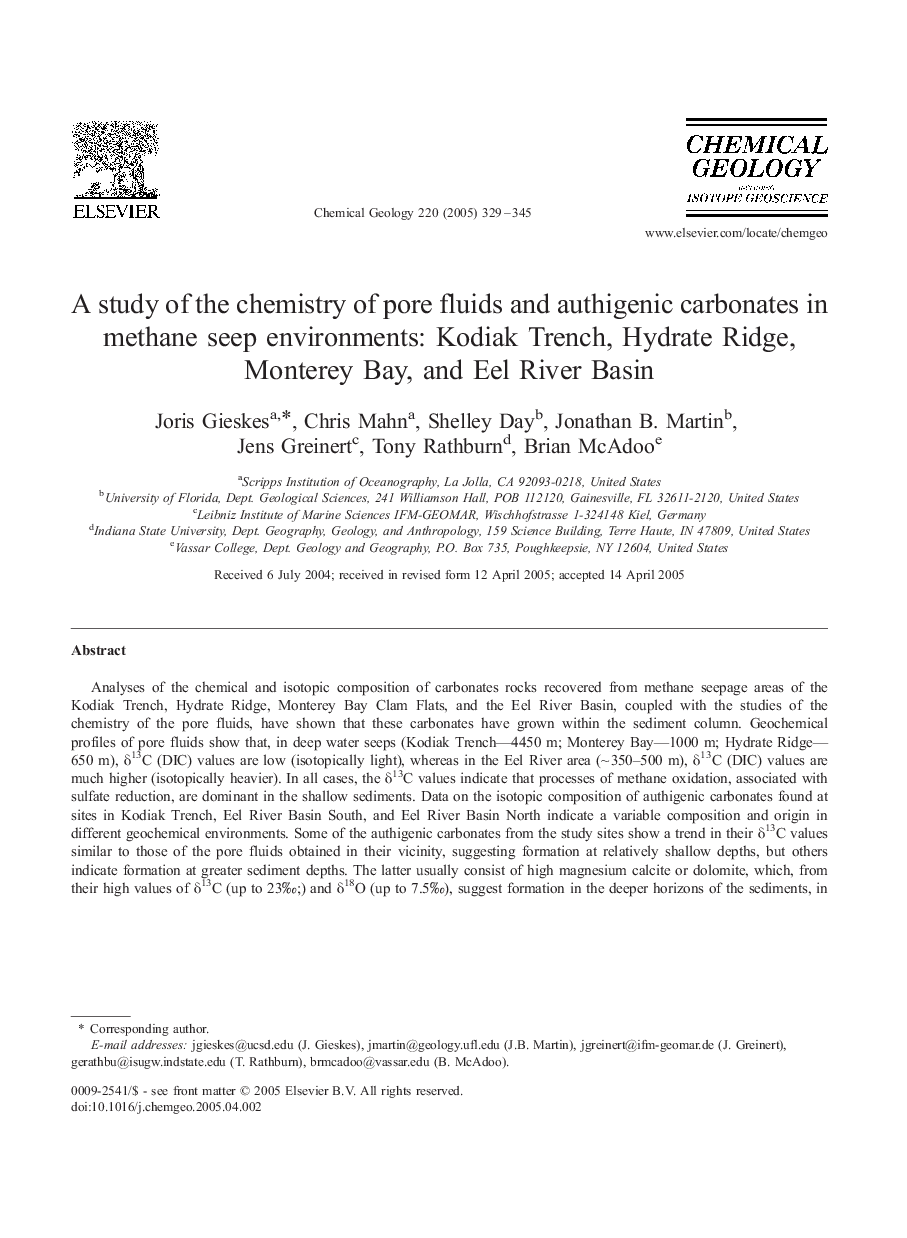| Article ID | Journal | Published Year | Pages | File Type |
|---|---|---|---|---|
| 9528973 | Chemical Geology | 2005 | 17 Pages |
Abstract
Analyses of the chemical and isotopic composition of carbonates rocks recovered from methane seepage areas of the Kodiak Trench, Hydrate Ridge, Monterey Bay Clam Flats, and the Eel River Basin, coupled with the studies of the chemistry of the pore fluids, have shown that these carbonates have grown within the sediment column. Geochemical profiles of pore fluids show that, in deep water seeps (Kodiak Trench-4450 m; Monterey Bay-1000 m; Hydrate Ridge-650 m), δ13C (DIC) values are low (isotopically light), whereas in the Eel River area (â¼Â 350-500 m), δ13C (DIC) values are much higher (isotopically heavier). In all cases, the δ13C values indicate that processes of methane oxidation, associated with sulfate reduction, are dominant in the shallow sediments. Data on the isotopic composition of authigenic carbonates found at sites in Kodiak Trench, Eel River Basin South, and Eel River Basin North indicate a variable composition and origin in different geochemical environments. Some of the authigenic carbonates from the study sites show a trend in their δ13C values similar to those of the pore fluids obtained in their vicinity, suggesting formation at relatively shallow depths, but others indicate formation at greater sediment depths. The latter usually consist of high magnesium calcite or dolomite, which, from their high values of δ13C (up to 23â°;) and δ18O (up to 7.5â°), suggest formation in the deeper horizons of the sediments, in the zone of methanogenesis. These observations are in agreement with observations by other workers at Hydrate Ridge, in Monterey Bay, and in the Eel River Basin.
Keywords
Related Topics
Physical Sciences and Engineering
Earth and Planetary Sciences
Geochemistry and Petrology
Authors
Joris Gieskes, Chris Mahn, Shelley Day, Jonathan B. Martin, Jens Greinert, Tony Rathburn, Brian McAdoo,
